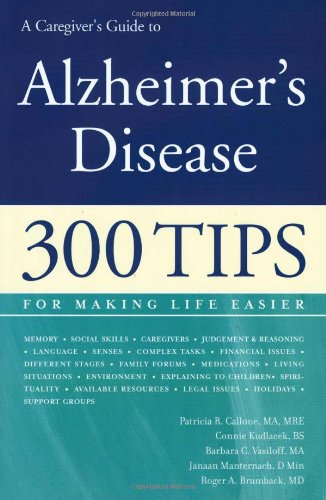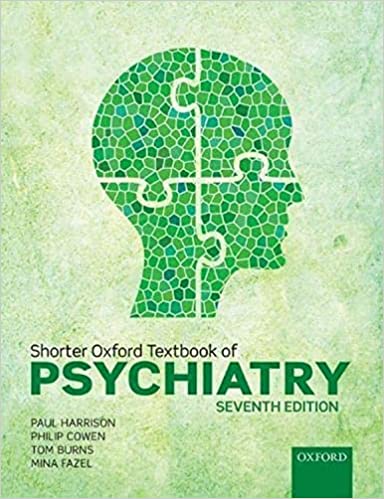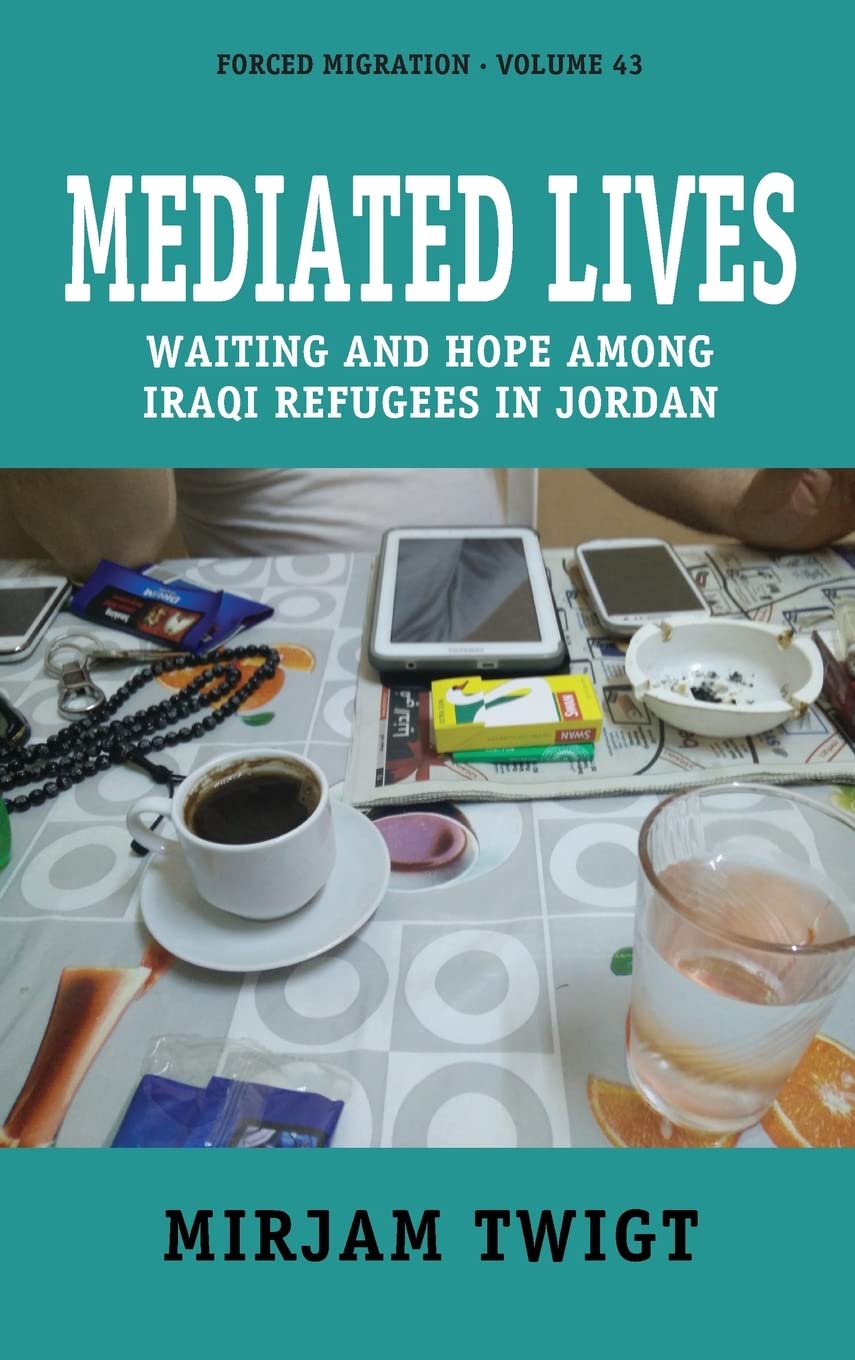موضوعات
آموزش و پرورش
ادبیات و زبان
پزشکی، دندانپزشکی و داروسازی
تاریخ و جغرافیا
داستان و رمان
دیگر
دین و فلسفه
روانشناسی
ریاضیات و آمار
سلامتی، تناسب اندام و رژیم غذایی
شیمی و پلیمر
علوم اجتماعی و حقوق
علوم زیستی و بیوتکنولوژی
فیزیک و نجوم
کامپیوتر و اینترنت
کتابهای کودکان و داستان
کسب و کار و اقتصاد
کشاورزی و دامپزشکی و غذا
معماری
مهندسی و فناوری
هنر و تئاتر
محصولات
A Caregiver's Guide to Alzheimer's Disease: 300 Tips for Making Life Easier - Original PDF
نویسندگان: خلاصه: An estimated 5 million Americans have Alzheimer's disease. That number continues to grow — by 2050 the number of individuals with Alzheimer's could range from 11.3 million to 16 million. Alzheimer's disease is not a normal part of aging. It is a devastating disorder of the brain's nerve cells that impairs memory, thinking, and behavior. Winner of the 2006 American Journal of Nursing Book of Year Award, A Caregiver's Guide to Alzheimer's Disease will help readers understand what is physically happening to the brain so they can empower their own special skills and talents throughout the disease process. Chapters cover legal and financial issues, family forums in the caregiving process, the role of medication at various stages of the disease, helping children understand what is happening to a loved one, handling the holidays and celebrations, and making the living environment more stimulating and enjoyable. With an abundance of pointers and guidelines for affected individuals, their families, friends and caregivers, A Caregiver's Guide to Alzheimer's Disease is essential for all readers who want to focus on the capabilities that remain instead of those that have been lost.Preparing for Blockade 1885–1914 - Original PDF
نویسندگان: خلاصه: Today British strategy is slowly swinging back to the sea, as the critical importance of the wider world as fuel and food security, economic prosperity and diplomatic and cultural links reinforce the hard lessons of the past decade, namely that large-scale land operations are both ineffective and costly methods of waging war on inchoate, amorphous organisations, and large backward states unified by vehement hatred of foreignersNaval Warfare A Global History since 1860 - Original PDF
نویسندگان: خلاصه: The modern age of naval warfare began with the combination of steam power, iron warships, and modern artillery in the mid-nineteenth century, to be rapidly joined by advanced mines, torpedoes, and submersible war craft. This combination launched a new period of acute naval competition. Moreover, this period was of marked international and geopolitical significance.UNDERSTANDING NAVAL WARFARE - Original PDF
نویسندگان: خلاصه: ‘In order to understand the concept of naval warfare there are two things that are required: to be able to define what navies do for a state, and their utility for operations during total war, limited war and peace. Understanding Naval Warfare does both things very well and is a wonderfully informative and readable introduction into the com - plex world of naval warfare. Packed with useful definitions, explanations, examples, theoretical understanding and technical knowledge, the book is well worth the money for anyone wishing to embark on the study of naval power and its uses.Oxford Handbook of Clinical Haematology - Original PDF
نویسندگان: خلاصه: Providing essential information needed in clinical practice for the diagnosis and management of patients with blood disorders, this handbook covers haematological investigations and their interpretation, and commonly used protocols.Modern Medical Toxicology - Original PDF
نویسندگان: خلاصه: Brand New International Paper-back Edition Same as per description, **Economy edition, May have been printed in Asia with cover stating Not for sale in US. Legal to use despite any disclaimer on cover. Save Money. Contact us for any queries. Best Customer Support! All Orders shipped with Tracking NumberShorter Oxford Textbook of Psychiatry (7th Edition) - Original PDF
نویسندگان: خلاصه: The book provides an introduction to all the clinical topics, sub-specialties, and major psychiatric conditions required by the trainee psychiatrist. Throughout, the authors emphasize the basic clinical skills required for full assessment and understanding of the patient. Discussion of treatment includes not only scientific evidence, but also practical problems in the management of patients in a family and social context.Fruit crops - Original PDF
نویسندگان: خلاصه: Some of the world's most widespread and debilitating nutritional disorders, including birth defects, mental and physical retardation, weakened immune systems, blindness, and even death, are caused by diets lacking in vitamins and minerals. Low fruit and vegetable intake is a major contributing factor to such micronutrient deficienciesHandbook of Water and Wastewater Microbiology - Original PDF
نویسندگان: خلاصه: The purpose of this Handbook is to provide an introduction to modern water and wastewater microbiology, especially for water and wastewater engineers. The study of water and wastewater microbiology is very rewarding: better water treatment, better wastewater treatment, safer wastewater reuse, and thus healthier people – in all parts of our world.Mediated Lives: Waiting and Hope among Iraqi Refugees in Jordan - Original PDF
نویسندگان: خلاصه: Using the example of Iraqi refugees in Jordan's capital of Amman, this book describes how information and communication technologies (ICTs) play out in the everyday experiences of urban refugees, geographically located in the Global South, and shows how interactions between online and offline spaces are key for making sense of the humanitarian regime, for carving out a sense of home and for sustaining hope. This book paints a humanizing account of making do amid legal marginalization, prolonged insecurity, and the proliferation of digital technologies.آیا کتاب مورد نظر هنوز بر روی سایت قرار نگرفته است؟ جای نگرانی نیست! کافی است بر روی گزینه سفارش کتاب کلیک کرده و درخواست خود را ثبت کنید. در کمتر از چند ساعت کتاب شما را آماده خواهیم کرد.









